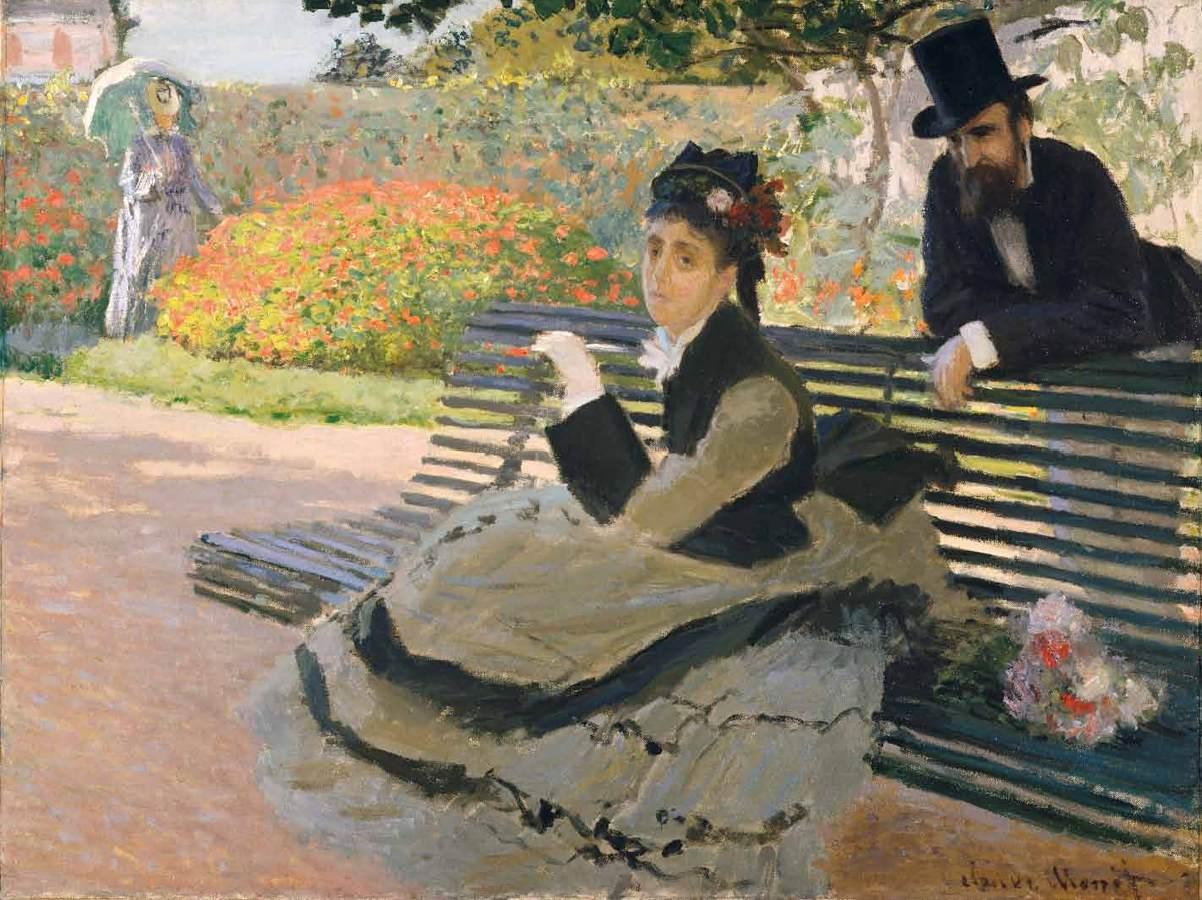One of the most famous works of Claude Monet, “Camille Monet on a Garden Bench” (1873) depicts his first wife and muse in a serene and idyllic setting. The painting is a masterpiece of impressionism, a style that Monet pioneered and perfected in his long and prolific career.
The painting captures a fleeting moment of light and color, as Camille sits on a wooden bench surrounded by lush greenery and flowers. She wears a simple white dress with blue ribbons and a straw hat, holding a parasol in her right hand. Her face is turned slightly to the left, as if she is looking at something or someone outside the frame. Her expression is calm and contemplative, suggesting a sense of harmony and intimacy with nature.
The painting is remarkable for its use of loose and spontaneous brushstrokes, which create a vibrant and dynamic impression of the scene. Monet applied thin layers of paint in contrasting colors, such as blue and orange, to create a shimmering effect of light and shadow. He also used complementary colors, such as green and red, to enhance the visual impact of the painting. The painting is not concerned with realistic details or perspective, but rather with conveying the mood and atmosphere of the garden.
The painting is also a testament to Monet’s love for his wife, who died of tuberculosis in 1879. Camille was his favorite model and appeared in many of his paintings, such as “Women in the Garden” (1866) and “The Woman in the Green Dress” (1866). She was also a supportive partner who encouraged his artistic pursuits and shared his passion for nature. The painting is a tribute to their happy and romantic relationship, as well as a poignant reminder of their tragic separation.











